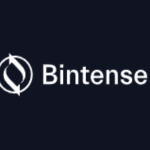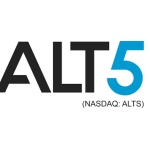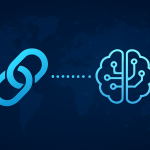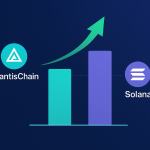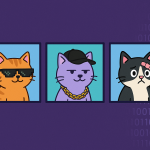Coin News
The Blockchain Gaming Evolution: How It Will Dominate The Industry In 2025

Introduction
The gaming industry is undergoing a massive transformation, driven by the rapid adoption of blockchain technology. As we step into 2025, blockchain gaming is no longer a niche market but a mainstream revolution, poised to redefine how players interact, earn, and engage with virtual worlds.
From play-to-earn (P2E) models to non-fungible tokens (NFTs) and decentralized gaming economies, blockchain is disrupting traditional gaming structures. But what makes blockchain gaming the future of the industry? How are major gaming studios responding to this shift? And what role does the community play in shaping this new era?
In this article, we will explore the evolution of blockchain gaming, its core mechanics, benefits, challenges, and what the future holds for this fast-growing sector.
Understanding Blockchain Gaming: What Sets It Apart?
Traditional gaming relies on centralized servers and economies controlled by developers. Players purchase in-game assets, but they don’t truly own them. If a game shuts down, all assets and progress are lost.
Blockchain gaming, on the other hand, leverages decentralized networks, smart contracts, and NFTs to give players true ownership of digital assets. This innovation creates a player-driven ecosystem where in-game currencies, characters, and items can be bought, sold, and traded across multiple platforms.
Key Features of Blockchain Gaming:
True Asset Ownership: Players own their in-game assets as NFTs stored on a blockchain.
Interoperability: Assets can be used across different games and platforms.
Decentralization: Games operate on blockchain networks, reducing reliance on central authorities.
Play-to-Earn (P2E) Models: Players earn cryptocurrency or NFTs by participating in the game.
Transparency and Security: Blockchain ensures fair gameplay and secure transactions.
These elements contribute to an open economy, making gaming more rewarding and sustainable.
The Rise Of Play-To-Earn (P2E): A New Gaming Economy
One of the biggest breakthroughs in blockchain gaming is the Play-to-Earn (P2E) model. Instead of spending money on in-game assets with no real-world value, players can now earn cryptocurrency and NFTs by simply playing the game.
This model gained popularity in 2021 with games like Axie Infinity, where players earned tokens by battling and breeding NFT creatures. The success of such games demonstrated that gaming could be more than just entertainment—it could also be a source of income.
Top Play-to-Earn Games in 2025:
Illuvium – A blockchain-based RPG where players collect and battle NFT creatures.
Star Atlas – A space exploration game with an expansive metaverse economy.
Big Time – A multiplayer action RPG with NFT-based rewards.
Decentraland & The Sandbox – Virtual worlds where users can buy land, build experiences, and monetize content.
The growth of P2E has empowered gamers worldwide, especially in developing countries, where gaming has become a viable livelihood.
The Role Of NFTs In Blockchain Gaming
Non-fungible tokens (NFTs) have become a cornerstone of blockchain gaming. These unique digital assets represent ownership of in-game items, such as characters, skins, weapons, and virtual land.
How NFTs are Changing the Gaming Landscape?
Scarcity and Value: Rare in-game items hold real-world value and can be sold on secondary markets.
Cross-Game Usability: NFTs can be transferred across different games in the metaverse.
Player Empowerment: Gamers no longer rely on game developers to control their assets.
In 2025, many AAA game developers are integrating NFTs into their ecosystems, allowing players to trade assets freely and even profit from their gaming activities.
Blockchain And The Metaverse: A Perfect Match
The concept of the metaverse—a fully immersive digital universe—is closely linked with blockchain gaming. Companies like Meta, Microsoft, and Decentraland are working on metaverse platforms that integrate gaming, social interaction, and virtual commerce.
How Blockchain Powers the Metaverse?
Digital Ownership: Players own virtual real estate, fashion items, and accessories as NFTs.
Economic Freedom: Decentralized finance (DeFi) allows users to buy, sell, and earn within the metaverse.
Interoperability: Games, social hubs, and marketplaces are connected through blockchain technology.
By 2025, blockchain gaming is expected to be a key driver of the metaverse economy, blurring the lines between gaming, work, and social interactions.
Major Gaming Studios Adopting Blockchain
The success of blockchain gaming has caught the attention of major gaming studios. While early blockchain games were developed by indie creators, big names are now entering the space.
Notable Studios Investing in Blockchain Gaming:
Ubisoft: Launched Quartz, an NFT-based gaming initiative.
Square Enix: Exploring blockchain integration in future RPGs.
Electronic Arts (EA): Experimenting with P2E and NFT mechanics.
Epic Games: Allowing blockchain-based games on their platform.
The gaming industry is shifting towards a Web3 future, where blockchain gaming becomes the standard rather than the exception.
Challenges And Criticism Of Blockchain Gaming
Despite its growth, blockchain gaming faces several challenges:
Scalability Issues
Many blockchain networks struggle with transaction speed and costs. Layer-2 solutions like Polygon and Immutable X are helping to address these problems.
Environmental Concerns
Some critics argue that blockchain gaming, especially on proof-of-work chains, consumes excessive energy. However, Ethereum’s transition to proof-of-stake (PoS) has significantly reduced its carbon footprint.
Regulatory Uncertainty
Governments are still catching up with cryptocurrency regulations, which could impact the future of P2E economies.
Adoption Barriers
Many traditional gamers resist blockchain integration due to its complexity and association with speculation. User-friendly onboarding solutions are crucial for mainstream adoption.
The Future Of Blockchain Gaming Beyond 2025
Looking ahead, blockchain gaming is expected to evolve in the following ways:
More AAA Blockchain Games: Established studios will fully integrate blockchain into their games.
AI Integration: AI-powered NFTs and NPCs will enhance gameplay experiences.
Stronger Regulation: Clearer laws will provide security for players and investors.
Hybrid Models: A blend of traditional and blockchain gaming will create a more seamless experience.
By 2030, blockchain gaming could become the dominant form of gaming, influencing how digital economies function globally.
Conclusion
The blockchain gaming revolution is no longer a futuristic concept—it is happening now. With decentralized economies, NFT ownership, play-to-earn incentives, and metaverse integrations, blockchain gaming is set to dominate the industry in 2025.
As major studios, developers, and players embrace this transformation, the gaming landscape will never be the same again. Whether you’re a casual player or an investor, blockchain gaming presents endless opportunities for innovation and growth.




